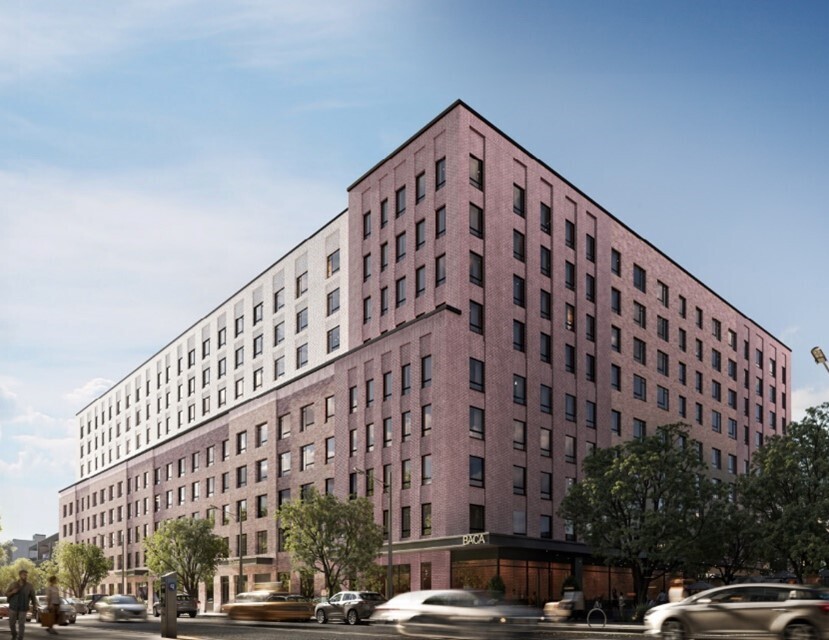By Elizabeth O’Brien
Community members and scientific experts applauded an Environmental Protection Agency proposal to expand testing for 9/11 contaminants to residences and workplaces north of Canal St.
At a July 26 public meeting, E.P.A. officials outlined a testing program that would sample apartments, offices, firehouses and schools south of Houston St. to determine whether any contaminants remain from the collapse of the World Trade Center and subsequent fires. The new testing program would nearly double the area of the E.P.A.’s previous efforts to test and clean Lower Manhattan, which were limited to residences south of Canal St.
“I’m happy the wall of Canal St. has been buried forever,” said Paul Lioy, a professor of environmental and occupational medicine at the Robert Wood Johnson Medical School and a member of the expert panel reviewing the E.P.A. response to 9/11.
Since its formation in March, the E.P.A.-led panel of 18 government and independent experts has grappled with the best way to gauge lingering contamination from the World Trade Center collapse while bolstering public confidence in the E.P.A. Public trust in the agency plummeted after its independent inspector general wrote last August that the E.P.A. acted without sufficient evidence when it declared the air Downtown safe to breathe one week after the trade center disaster. Also, in 2002, the agency instituted a residential cleanup program that many Downtowners found to be poorly designed and run.
While concerns remain over the geographic and chemical scope of the proposed new program, observers and panelists said the plan had promise.
“It appears the E.P.A. is taking a step in the right direction, and finally doing its job at ground zero,” said U.S. Rep. Jerrold Nadler, in a statement. Nadler has been one of the harshest critics of the E.P.A. response to 9/11.
“I think this is an outstanding design, and I think this has moved us past where we started,” said David Prezant, a panel member who is also deputy chief medical officer with the New York Fire Department.
The proposal involves sampling 600 to 800 units that are volunteered by their owners. A unit is defined as an apartment, a classroom, or equivalent space within an office building or firehouse. Apartments that participated in the E.P.A.’s initial cleaning and sampling program are eligible for inclusion in the new program; registration procedures have not yet been established for this phase.
Workers would collect 10 samples per unit and test them for four known World Trade Center contaminants: asbestos, man-made insulation materials, silica and PAHs (polyaromatic hydrocarbons).
The cost of the sampling and analysis would be about $12,000 per unit, Paul Gilman, chairperson of the panel and assistant administrator for research and development at the E.P.A., told Downtown Express during a break in Monday’s meeting. If the agency tests 800 apartments, the sampling and analysis would cost $9.6 million.
In compiling the list of contaminants, officials chose toxins not commonly found in urban environments, whose origins could be traced more definitively to 9/11. But some questioned the decision to exclude lead, which is common in cities and also in World Trade Center dust.
“I strongly urge you to put lead back into your protocol,” said Suzanne Mattei of the Sierra Club.
Mattei argued that Lower Manhattan is not part of New York City’s “lead belt,” where the metal is more prevalent, and therefore the trade center could be considered a possible source of lead found in Lower Manhattan. Since children under age seven are particularly susceptible to the effects of lead poisoning, the E.P.A. could test for lead in only those apartments with young children, suggested Catherine McVay Hughes, a Lower Manhattan resident who serves as the panel’s community liaison.
Within the next two weeks, the E.P.A. will issue a revised proposal that will incorporate feedback from Monday’s meeting, said Michael Brown, an agency spokesperson. Brown said the community would present its comments on the revisions at the panel’s next meeting in September, and the program is to begin shortly thereafter with a competitive bidding process for the sampling and analysis contracts.
Whatever form it takes, the final program design will represent a big departure from the panel’s original charge to revisit some of the 4,200 apartments that participated in the E.P.A.’s first testing and cleaning program. This would have gauged whether any recontamination occurred since the initial cleanup, but panelists quickly dismissed that plan and called for a broader approach.
In a further sign that the panel has embraced an expansive mandate, members agreed on Monday to monitor the dismantling of the Deutsche Bank building across from ground zero. Testing by Deutsche Bank contractors found very high levels of asbestos in the building at 130 Liberty St., and community members fear harmful exposure when it is taken apart.
Mary Perillo, a resident of 125 Cedar St. next to the Deutsche Bank building, appealed to the panel during a public comment period of Monday’s meeting.
“I know you’re doing a lot of work for us already, but we have nowhere else to go,” Perillo said. “Can you be our advocates?”
“As a panel member, I think it’s clearly within our mandate to help you,” Prezant said. His comments were echoed by other members.
Jeanne Stellman, a panelist and professor at Columbia University’s Mailman School of Public Health, said the E.P.A. must consider the Deutsche Bank building in the context of its own sampling program. Monday’s proposal called for a free cleanup of units found to have elevated levels of contaminants.
But Stellman said it may not make sense for the E.P.A. to invest time and money cleaning apartments and workplaces with the 14-month dismantling process looming as a potential source of recontamination: “It’s like washing your kitchen floor and going out to do the gardening afterwards.”
WWW Downtown Express
For More: https://www.amny.com/news/events-33/



























